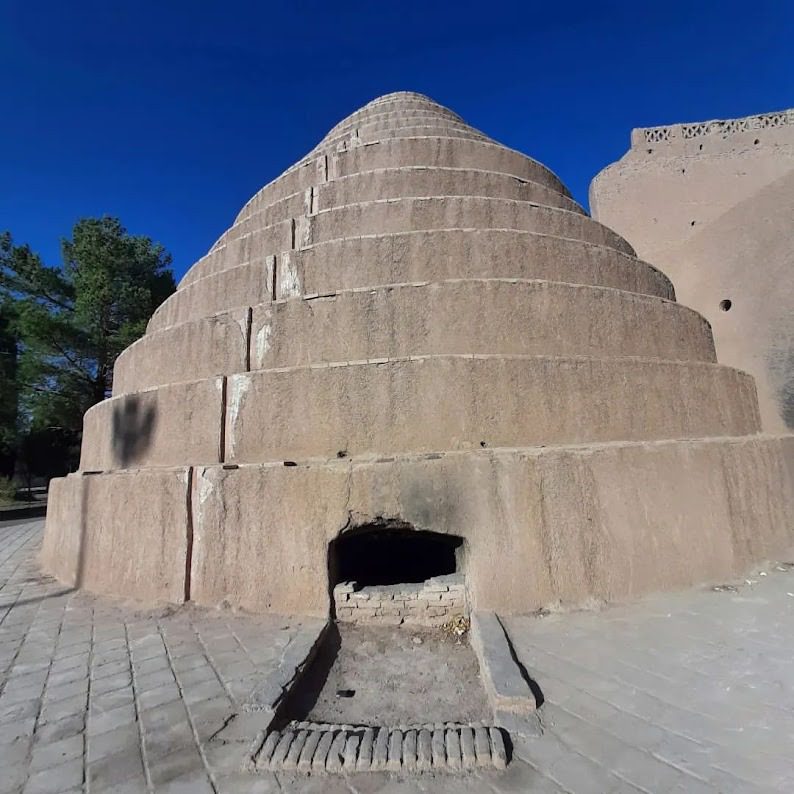Sirjan twin glaciers: a masterpiece of Iranian engineering in the heart of the desert
The twin glaciers of Sirjan shine like two bright gems in the heart of the Lut desert. These two huge ice reservoirs, which are located 5 kilometers west of Sirjan, are a reminder of the creativity and intelligence of Iranians in the past.
Journey to the depths of history and knowledge:
By walking in the area of Sirjan’s twin glaciers, it is as if you are traveling to the depths of the history and knowledge of Iranians in the past. The grandeur of the conical domes, the thickness of the walls, the numerous stairs, and the natural ventilation system remind you of the efforts and perseverance of the people who were looking for a way to store and preserve ice in the harsh desert conditions.
The cool secret of the desert in the heart of conical domes:
The twin glaciers of Sirjan were actually two huge dome-shaped reservoirs for storing ice in the winter season. Ice was collected from the surrounding mountains during the winter and stored in these glaciers to be used to cool water and food during the summer.
Iranian engineering masterpiece:
The architecture of Sirjan’s twin glaciers is an example of Iranian engineering masterpiece in the past. The use of native materials such as clay and plaster, cone-shaped domes to reflect sunlight and prevent the ice from heating up, the thickness of the walls to maintain coolness, and the natural ventilation system to keep the interior of the glacier cool, show the knowledge and skill of Iranian architects at that time. Is.
Amazing details:
Conical domes: Conical domes of glaciers have a height of about 11 meters and are made of materials such as clay and plaster.
Walls: The walls of the ice houses are about 2 meters thick, which helps to keep the interior cool.
Stairs: There are several stairs inside the icehouses that are used to access the ice tank.
Ventilation system: A ventilation system was installed in the ices, which circulates cool air inside the ices and prevents the ices from heating up.


